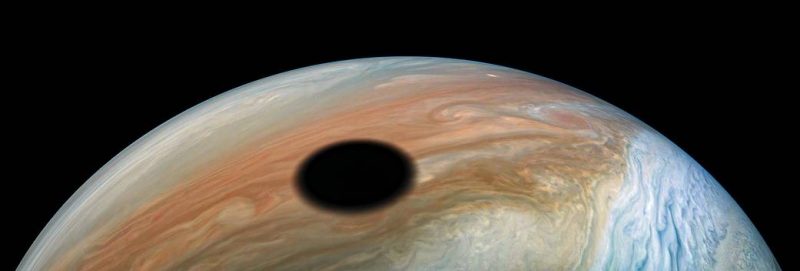
Jupiter will be brightest in early December, so now is a good time to look for its 4 largest moons. For more events, visit EarthSky’s night sky guide.
Exciting news, EarthSky family! The 2025 Lunar Calendar Presale is live!
How to see Jupiter’s moons
All you need is a good pair of binoculars (or a telescope) to see the four largest moons of the biggest planet in our solar system, Jupiter.
Three of the four moons are bigger than Earth’s moon. And one – Ganymede – is the largest moon in the solar system. These four satellites are collectively called the Galilean moons to honor the Italian astronomer Galileo, who discovered them in 1610. November 2024 is a great month to look for Jupiter’s four large moons. That’s because the king of planets is nearing opposition – when Earth will sweep between it and the sun – in early December. So the distance between Earth and Jupiter is now less than usual. And Jupiter is bright!
From Earth, through a small telescope or strong binoculars, the moons of Jupiter look like tiny starlike pinpricks of light. But you’ll know they’re not stars because you’ll see them stretched out in a line that bisects the giant planet.
Depending on what sort of optical aid you use, you might glimpse just one moon or see all four. If you see fewer than four moons, that might be because a moon is behind – or in front of – Jupiter. If a moon is in front of the planet, you probably can’t see it. The moon is too tiny and gets lost from our view. But observers do sometimes see a moon shadow crossing Jupiter’s cloud-tops. That event is called a transit.
Going from the moon closest to Jupiter to the outermost, their order going outward from Jupiter is Io, Europa, Ganymede and Callisto.
What you’ll see
Writing at SkyandTelescope.com, Bob King has said:
Etched in my brain cells is an image of a sharp, gleaming disk striped with two dark belts and accompanied by four starlike moons through my 2.4-inch [6 cm] refractor in the winter of 1966. A 6-inch [15 cm] reflector will make you privy to nearly all of the planet’s secrets …
When magnified at 150x or higher [Jupiter’s 4 largest moons] lose their starlike appearance and show disks that range in size from 1.0″ to 1.7″ (arcseconds). Europa is the smallest and Ganymede the largest.
Ganymede also casts the largest shadow on the planet’s cloud tops when it transits in front of Jupiter. Shadow transits are visible at least once a week with ‘double transits’ – two moons casting shadows simultaneously – occurring once or twice a month. Ganymede’s shadow looks like a bullet hole, while little Europa’s more resembles a pinprick. Moons also fade away and then reappear over several minutes when they enter and exit Jupiter’s shadow during eclipse. Or a moon may be occulted by the Jovian disk and hover at the planet’s edge like a pearl before fading from sight.
Images of Jupiter’s moons from the EarthSky community
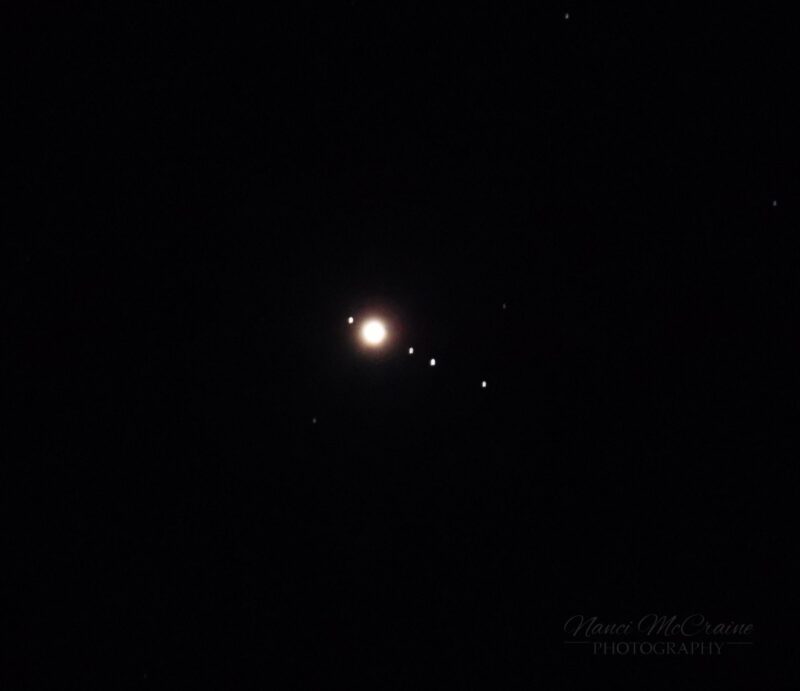
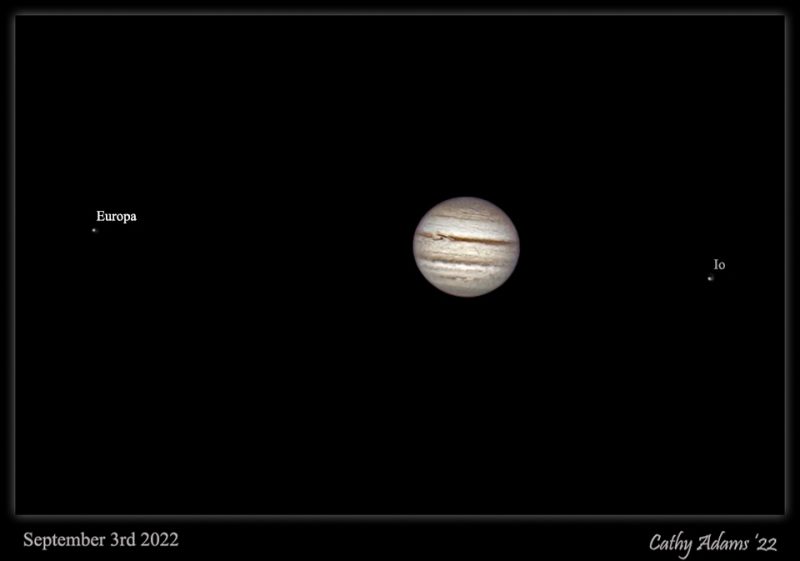
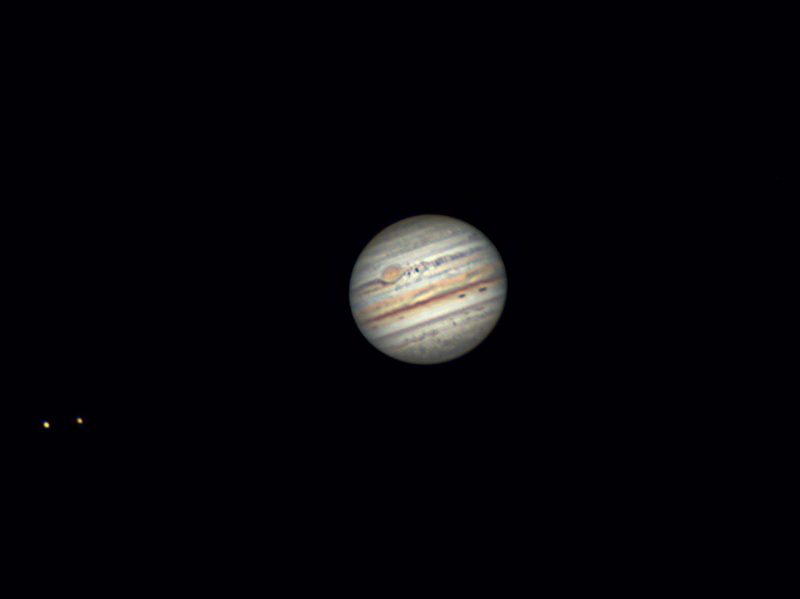
More images
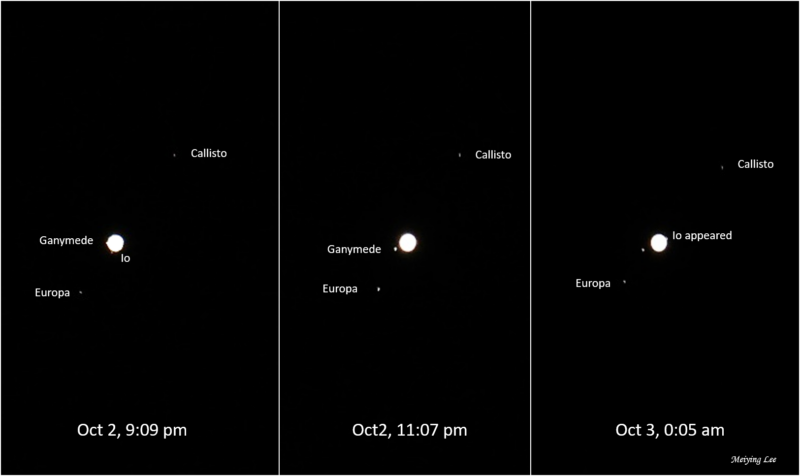
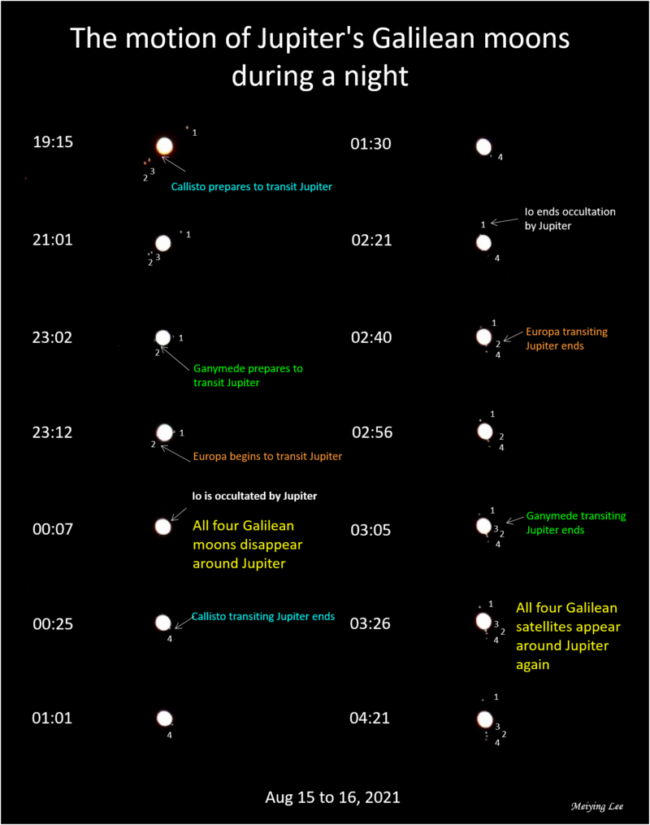
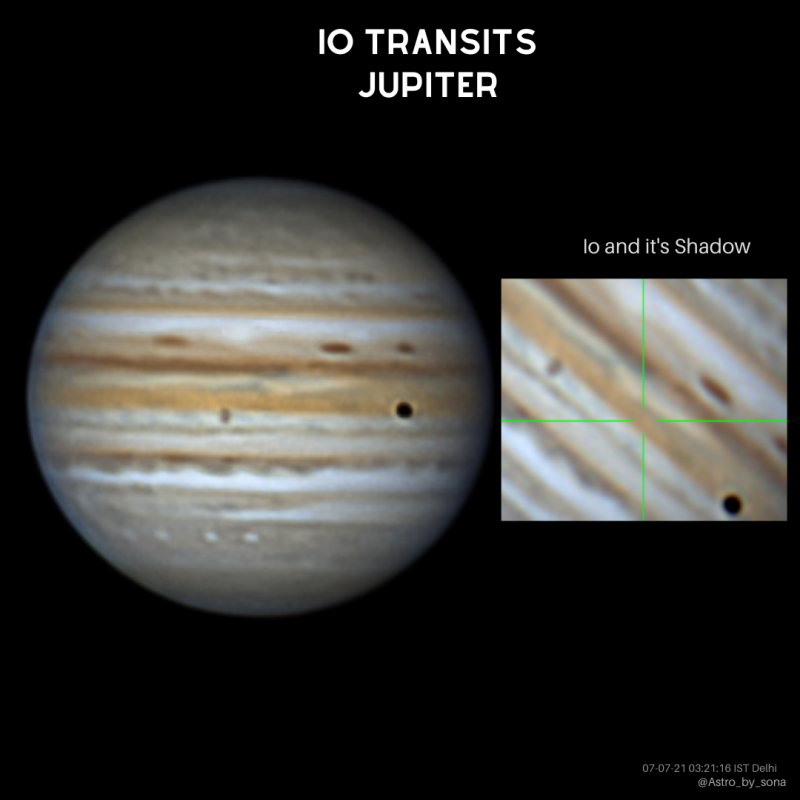
Special viewings of Jupiter’s moons
As with most moons and planets, the Galilean moons orbit Jupiter around its equator. We do see their orbits almost exactly edge-on, but, as with so much in astronomy, there’s a cycle for viewing the edge-on-ness of Jupiter’s moons. This particular cycle is six years long. So every six years we view Jupiter’s equator – and the moons orbiting above its equator – at the most edge-on. During these special times, we can see the moons eclipse and cast shadows on not just giant Jupiter but on each other.
In 2021 we were able to view a number of mutual events (eclipses and shadow transits) involving Jupiter’s moons. The next cycle of mutual events will be in 2027.
Another special event, a rare triple transit, occurs on October 18, 2025, when three of Jupiter’s moons will pass in front of the giant planet at once. The last time Earth could witness a triple transit was in 2021. Triple transits are not visible from all parts of the globe, however.
You can find information here for dates and times to observe the Galilean moons
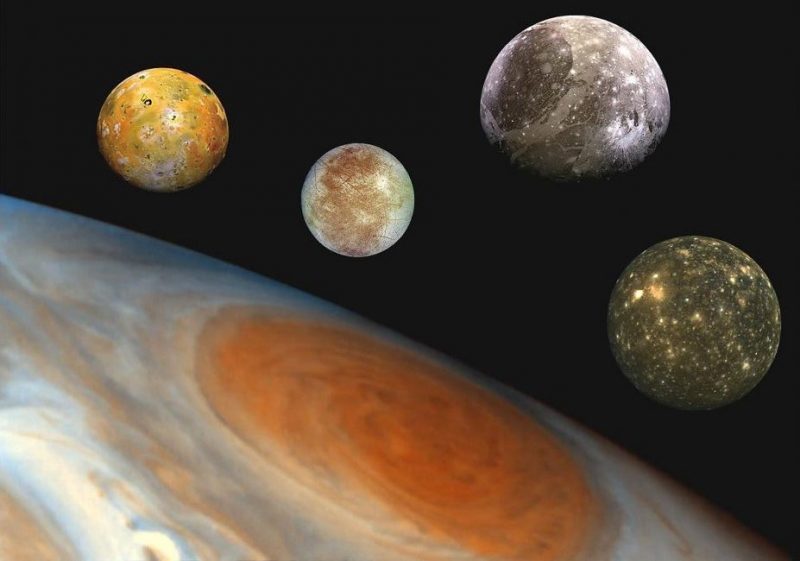
Jupiter at opposition in December 2024
On December 7, 2024, Jupiter is at opposition, when the planet is opposite the sun in the sky as seen from Earth. When Earth passes directly between Jupiter and the sun, we’ll see Jupiter rise at sunset and set at sunrise. Opposition is the middle of the best time of the year to see a planet, since that’s when the planet is up and viewable all night and is generally closest for the year. But any time Jupiter is visible in your sky, you can view Jupiter’s four major moons.
So if you get a chance, grab some binoculars or a small telescope and go see Jupiter’s Galilean moons with your own eyes!
Click here for recommended sky almanacs; they can tell you Jupiter’s rising time in your sky.

Bottom line: November and December 2024 are great months for seeing Jupiter’s moons Io, Europa, Ganymede and Callisto with binoculars or a small telescope.
Check here for dates and times to observe the Great Red Spot
The post Jupiter’s moons: How to see and enjoy them first appeared on EarthSky.
from EarthSky https://ift.tt/ZEqRD8v

Jupiter will be brightest in early December, so now is a good time to look for its 4 largest moons. For more events, visit EarthSky’s night sky guide.
Exciting news, EarthSky family! The 2025 Lunar Calendar Presale is live!
How to see Jupiter’s moons
All you need is a good pair of binoculars (or a telescope) to see the four largest moons of the biggest planet in our solar system, Jupiter.
Three of the four moons are bigger than Earth’s moon. And one – Ganymede – is the largest moon in the solar system. These four satellites are collectively called the Galilean moons to honor the Italian astronomer Galileo, who discovered them in 1610. November 2024 is a great month to look for Jupiter’s four large moons. That’s because the king of planets is nearing opposition – when Earth will sweep between it and the sun – in early December. So the distance between Earth and Jupiter is now less than usual. And Jupiter is bright!
From Earth, through a small telescope or strong binoculars, the moons of Jupiter look like tiny starlike pinpricks of light. But you’ll know they’re not stars because you’ll see them stretched out in a line that bisects the giant planet.
Depending on what sort of optical aid you use, you might glimpse just one moon or see all four. If you see fewer than four moons, that might be because a moon is behind – or in front of – Jupiter. If a moon is in front of the planet, you probably can’t see it. The moon is too tiny and gets lost from our view. But observers do sometimes see a moon shadow crossing Jupiter’s cloud-tops. That event is called a transit.
Going from the moon closest to Jupiter to the outermost, their order going outward from Jupiter is Io, Europa, Ganymede and Callisto.
What you’ll see
Writing at SkyandTelescope.com, Bob King has said:
Etched in my brain cells is an image of a sharp, gleaming disk striped with two dark belts and accompanied by four starlike moons through my 2.4-inch [6 cm] refractor in the winter of 1966. A 6-inch [15 cm] reflector will make you privy to nearly all of the planet’s secrets …
When magnified at 150x or higher [Jupiter’s 4 largest moons] lose their starlike appearance and show disks that range in size from 1.0″ to 1.7″ (arcseconds). Europa is the smallest and Ganymede the largest.
Ganymede also casts the largest shadow on the planet’s cloud tops when it transits in front of Jupiter. Shadow transits are visible at least once a week with ‘double transits’ – two moons casting shadows simultaneously – occurring once or twice a month. Ganymede’s shadow looks like a bullet hole, while little Europa’s more resembles a pinprick. Moons also fade away and then reappear over several minutes when they enter and exit Jupiter’s shadow during eclipse. Or a moon may be occulted by the Jovian disk and hover at the planet’s edge like a pearl before fading from sight.
Images of Jupiter’s moons from the EarthSky community



More images



Special viewings of Jupiter’s moons
As with most moons and planets, the Galilean moons orbit Jupiter around its equator. We do see their orbits almost exactly edge-on, but, as with so much in astronomy, there’s a cycle for viewing the edge-on-ness of Jupiter’s moons. This particular cycle is six years long. So every six years we view Jupiter’s equator – and the moons orbiting above its equator – at the most edge-on. During these special times, we can see the moons eclipse and cast shadows on not just giant Jupiter but on each other.
In 2021 we were able to view a number of mutual events (eclipses and shadow transits) involving Jupiter’s moons. The next cycle of mutual events will be in 2027.
Another special event, a rare triple transit, occurs on October 18, 2025, when three of Jupiter’s moons will pass in front of the giant planet at once. The last time Earth could witness a triple transit was in 2021. Triple transits are not visible from all parts of the globe, however.
You can find information here for dates and times to observe the Galilean moons

Jupiter at opposition in December 2024
On December 7, 2024, Jupiter is at opposition, when the planet is opposite the sun in the sky as seen from Earth. When Earth passes directly between Jupiter and the sun, we’ll see Jupiter rise at sunset and set at sunrise. Opposition is the middle of the best time of the year to see a planet, since that’s when the planet is up and viewable all night and is generally closest for the year. But any time Jupiter is visible in your sky, you can view Jupiter’s four major moons.
So if you get a chance, grab some binoculars or a small telescope and go see Jupiter’s Galilean moons with your own eyes!
Click here for recommended sky almanacs; they can tell you Jupiter’s rising time in your sky.

Bottom line: November and December 2024 are great months for seeing Jupiter’s moons Io, Europa, Ganymede and Callisto with binoculars or a small telescope.
Check here for dates and times to observe the Great Red Spot
The post Jupiter’s moons: How to see and enjoy them first appeared on EarthSky.
from EarthSky https://ift.tt/ZEqRD8v

Aucun commentaire:
Enregistrer un commentaire